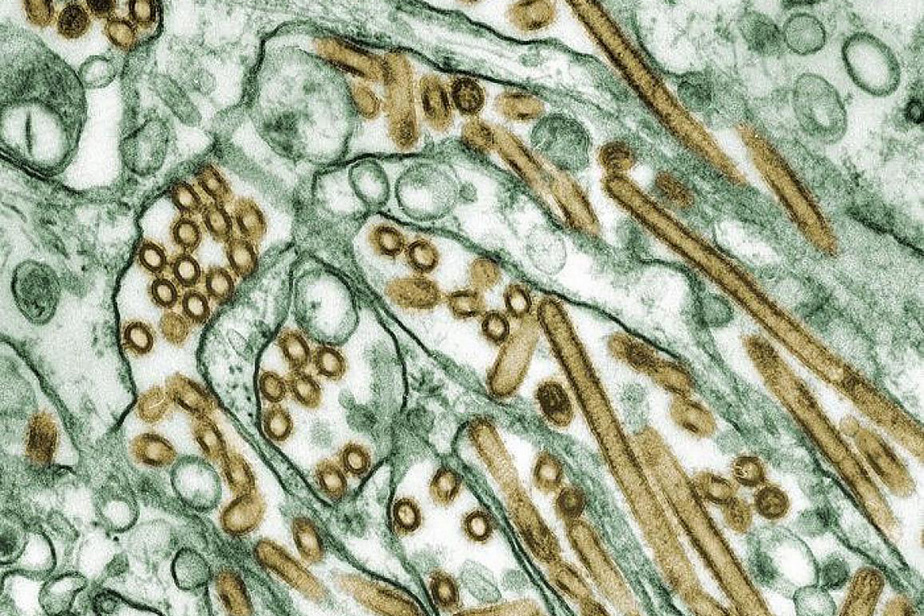(Montreal) Mutations suffered by the avian flu virus, H5N1, cause the appearance of new symptoms in certain mammals which are exposed to it, warns a new Canadian study.
The researchers found the virus in 40 Canadian carnivores, such as red foxes, striped skunks and mink that had possibly consumed the carcasses of dead or diseased birds.
If it is not so new that H5N1 can occasionally infect mammals, the symptoms observed this time are. Instead of causing the usual respiratory symptoms, the virus caused neurological symptoms; high amounts of H5N1 antigens have thus been detected in the brains of certain animals. Heart and lung injuries were also noted.
The researchers also discovered that the virus has undergone mutations that could make it better able to infect mammals.
Wild birds had apparently introduced this strain of the virus to Canada in 2021-2022. Such “critical” mutations observed so soon after his arrival, warn the authors of the study published by the scientific journal Emerging Microbes & Infectionshighlight the need to monitor the virus.
Influenza A viruses continually evolve and, consequently, accumulate adaptive mutations that facilitate virus replication, transmission between species, and pose pandemic risks to humans and animals.
Extract from the study
Some viruses are adapted very specifically to a host, recalled Dr. Levon Abrahamyan, who is a professor at the Animal Molecular Virology Laboratory of the Faculty of Veterinary Medicine at the University of Montreal. Others can mutate quickly and therefore adapt quickly to a new host.
“This is the case with coronaviruses and influenza viruses,” he said. This is why these viruses are very important in emerging viruses. »
Another study, this one carried out in the United States, found the presence of H5N1 in 57 living mammals, including foxes and raccoons. Fifty-three of them had neurological symptoms, including seizures, tremors, balance problems and a loss of fear of humans.
It is these neurological symptoms “that concern us,” said Dr. Abrahamyan, adding that the same symptoms could strike a cat or dog that comes into contact with a dead or sick bird.
The neurological symptoms observed in raccoons, skunks and Canadian mink resemble those seen in seals and foxes infected with the H5N8 virus, the researchers recall. A recent study in the UK showed that this virus may have been transmitted directly to foxes and seals by swans with whom they were kept in captivity.
It cannot therefore be excluded, specify the authors of the Canadian study, that the mutations undergone by H5N1 now allow its transmission from mammal to mammal, for example through breast milk or simply during close contact in the lair.
This risk of transmission remains unclear, however, since the strain of virus responsible for the current outbreak lacks two characteristics that could facilitate it, the researchers said.
In contrast, the H5N1 variant that had infected two Arctic foxes and an Ontario fox had a (rare) mutation that could make the virus more virulent in a mammal, allowing it to evade part of the response immune system of its host and therefore cause more severe disease.
“This virus can infect mammals, but it needs a longer and broader evolutionary process for it to adapt to sustained transmission between mammals,” said Dr. Abrahamyan. There is no evidence of direct transmission between mammals. »
The risk of transmission to humans is “really minimal” at the moment, he adds.
“A virus needs time and opportunity to become transmissible from mammal to mammal, from wild animal to domestic animal and from domestic animal to human,” he said. It is a long and random process. But monitoring is very important, there is no doubt. »
